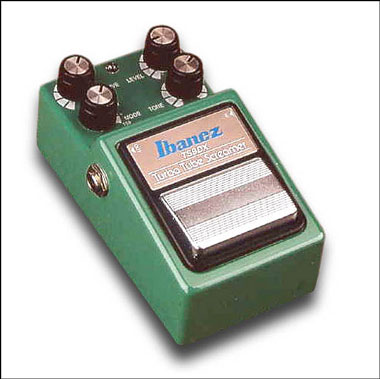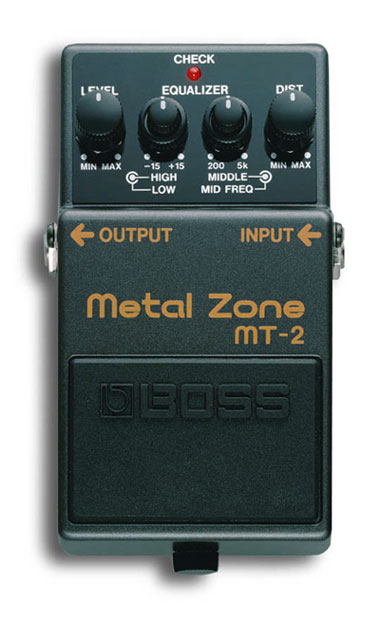In the world of rock guitar, the terms fuzz, distortion, and overdrive are often used interchangeably. Regardless of what you call it, to make your guitar solo rock, it must produce one or more of the core effects. All the world's a sound stage, and each effect has a role to play in your tone.
Though the terms are often used interchangeably, knowledgeable guitarists do make distinctions between the different types of the gain-based processing effect where the signal strength overwhelms the circuitry's capacity to reproduce it exactly. Though the term "distortion" is used generically to describe this effect, it also has a connotation when used to describe the differences between fuzz and overdrive. Take a moment to sort out these terms on the guitar player's level.
Distortion, in the generic sense of the signal getting electronically corrupted, is the signature sound of rock and roll. Can you imagine classic riffs such as the Rolling Stones' "Satisfaction" and AC/DC's "Back in Black" without a little crunch? The notes would be the same, but the musical statement would lose all its power, danger, and excitement.
Distortion boxes add gain to your guitar's signal. So much gain, in fact, that the circuit can't handle it any more. The resulting "overdrive" makes the circuit clip, or distort.
Because guitarists often use the terms overdrive, distortion, and fuzz interchangeably, and no clear-cut definition of each variation exists, you'll find overdrive units that can achieve fuzz-like effects, and vice versa. Always listen before you buy.
Distortion devices typically offer three controls:
- Drive (or gain) determines the amount of distortion.
- Tone (sometimes called EQ, for equalization, or filter) lets you shape the bass and treble content.
- Output (or level) determines the final, overall volume of the signal coming out of the box.
Overdrive
Overdrive is the mildest and most natural sounding of the three distortion types. The best models, such as the classic Ibanez Tube Screamer, shown in Figure 1, emulate the characteristics of a tube amplifier — some even have actual tubes built into their circuitry. The sound, rich in even harmonics, is warm and full. Use overdrive for blues and classic rock as well as pop lead sounds and hard rock rhythm sounds.
>

>
Figure 1: Although its circuitry is solid-state, the Ibanez Tube Screamer is a classic effect known for its smooth, tube-like overdrive.
You can use an overdrive pedal as a clean boost by setting the drive control low and the output control high. This is a great way to saturate your tube amp without adding too much coloration to your tone.
Distortion
Distortion, in the sense that it's compared with fuzz and overdrive, is an exaggerated, edgier form of overdrive. Distortion boxes, such as the Boss Metal Zone in Figure 2, produce a brighter, more cutting tone. Use them for hard rock and metal rhythm and lead sounds.
>

>
Figure 2: The Boss Metal Zone offers extremely high gain and built in EQ.
Distortion pedals carry all kinds of creative names, such as "Grunge," "Metal," and "In Your Face, Whimpering Slug." These names can give you a clue to the pedal's tone, but you still need your ears to judge. Remember the adage "One man's metal is another man's grunge."
Fuzz
Fuzz boxes, which were among the earliest guitar effects, take you to the extreme edge of distortion. Their bright, buzz-saw-like tone is the choice for classic 1960s sounds. Pedals that specialize in fuzz don't do a very good job of simulating the natural distortion of a tube amp; however, you can simulate a fuzz tone with a conventional distortion box by turning up the gain control and setting the tone for the brightest possible sound.
>
dummies
Source:http://www.dummies.com/how-to/content/processing-gainbased-rock-guitar-effects.html
No comments:
Post a Comment